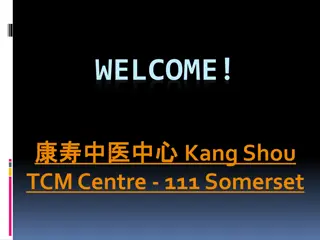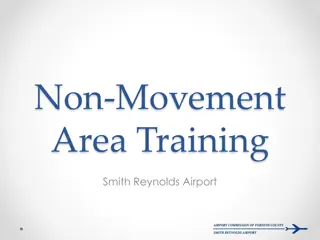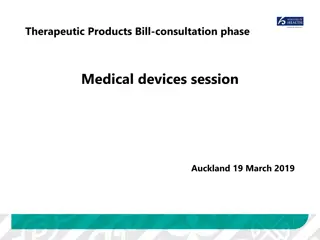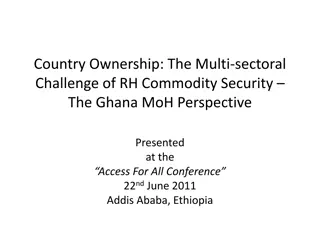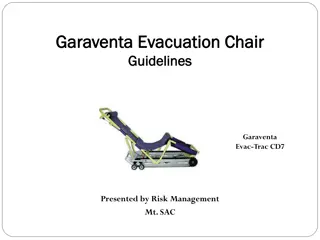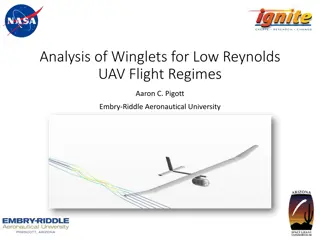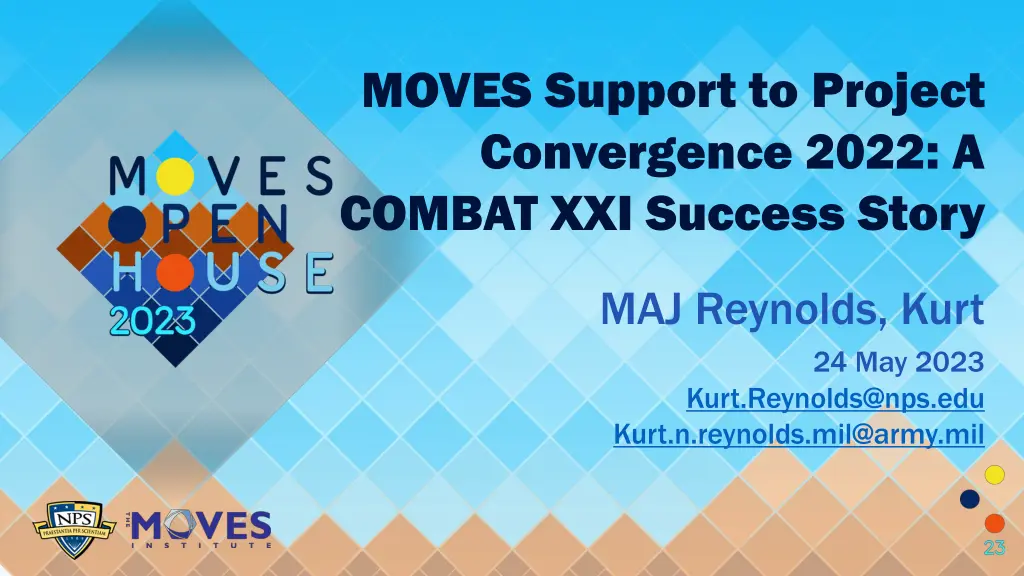
Enhancing Technological Readiness for Project Convergence 2022
Explore how technologies in Project Convergence 2022 impact the sensor-to-shooter kill chain, informing Army senior leaders about prospective capabilities. The analytical community's lack of situational awareness is addressed through dynamic understanding and simulation to enhance operational outcomes and equip formations with new technologies.
Download Presentation

Please find below an Image/Link to download the presentation.
The content on the website is provided AS IS for your information and personal use only. It may not be sold, licensed, or shared on other websites without obtaining consent from the author. If you encounter any issues during the download, it is possible that the publisher has removed the file from their server.
You are allowed to download the files provided on this website for personal or commercial use, subject to the condition that they are used lawfully. All files are the property of their respective owners.
The content on the website is provided AS IS for your information and personal use only. It may not be sold, licensed, or shared on other websites without obtaining consent from the author.
E N D
Presentation Transcript
MOVES Support to Project Convergence 2022: A COMBAT XXI Success Story MAJ Reynolds, Kurt 24 May 2023 Kurt.Reynolds@nps.edu Kurt.n.reynolds.mil@army.mil
Agenda Problem Statement Background Approach Results Future Work Discussion
Problem Statement The Army analytical community lacks situational awareness regarding how the various technologies used during project convergence (PC) 2022 interact with each other and influence the sensor-to-shooter kill chain of the Combined Joint Forces Land Component Command (CJFLCC) in a specified scenario that models the conditions of a future contingency. As a result, The Joint Modernization Command (JMC) cannot inform Army Senior leaders on the technological readiness and impacts of these new capabilities for the Army in support of the Joint Forces. TRAC WSMR, as part of The Combined Joint Integrated Data Analysis Cell (CJIDAC) requires a dynamic understanding of the interactions of the various PC 22 technologies and their effects on the sensor-to-shooter kill chain to inform senior leaders on their prospective capabilities.
Background Project Convergence 2022 (PC22) Known as the U.S. Army s campaign of learning, PC is based on a continuous, structured series of demonstrations, experiments and training scenarios throughout the year. In PC22, the U.S. Army, along with its Joint and Multinational partners, will experiment within concept-driven scenarios that focus on joint and Multi- national operations, integrate Joint and Multinational partners future capabilities and assess future warfighting concepts and emergent equipping options. Long Range Precision Fires PC22 Technologies at a glance
Approach (1 of 3) Analysis based on the WSMR Strategic Fires scenario modified by the Naval Analysis based on the WSMR Strategic Fires scenario modified by the Naval Postgraduate School (NPS) MOVES department. Postgraduate School (NPS) MOVES department. Observe and collect data on technologies participating in PC22 scenario. Observe and collect data on technologies participating in PC22 scenario. Leverage Leverage COMBAT XXI COMBAT XXI to explore changes to operational outcomes based on to explore changes to operational outcomes based on PC22 experimental results. PC22 experimental results. Enhance detection and decision logic in the strategic fires scenario. Enable integration of ProModel outputs to further resolve operational effectiveness of formations equipped with new technologies. Modify equipment attributes such as probability of detection, range, and speed to represent new technology. Deliverables (end of February 2023): Deliverables (end of February 2023): Simulation files to conduct further excursion analysis. Report of findings from incorporation of PC results. Results can potentially be included in the PC final report.
Approach (2 of 3) Model the Sensor-to-Shooter Kill chain in COMBAT XXI Simulate a use case vignette from the larger scenario Conduct comparative analysis Deliver results to stakeholders. Variables 1.Time to detect enemy. 2.Probability of detection (Pd). 3.Location precision of detected units. Events 1. Satellite detects enemy units and sends location to Command Post (CP). 2. CP instructs UAV unit to dispatch UAV to develop targetable intelligence. 1 DDG 3. UAV detects enemy units and sends target information to CP. 3 FF 6 S Variables 1.Range and speed of UAV. 2.Search pattern of UAV. 3.Range and Pd of UAV sensor(s). 4. CP clears fires and selects firing unit. Then, sends fire mission to unit. CP 5. Firing unit conducts fire mission. 6. UAV observes and transmits BDA. 2 Variables 1.Time to conduct fire mission. 2.Range and speed of rockets. 3.Probability of Kill (Pk). S 5 Variables 1.Time to process satellite intelligence. 2.Time to dispatch recon mission to UAV unit. M 4 Variables 1.Time to clear fires. 2.Time to select weapon-target pair. 3.Time to transmit fire mission. L
Approach (3 of 3) Analysis combines experimental and simulation data sources into a unified assessment of mission thread metrics. Detect Deliver Assess Process Decide Metrics: Total Time Satellite detection to BDA Complete Time from UAV detection to missile impact Number of targets destroyed/residual threat
Results Initial simulation results demonstrate a significant reduction in sensor-to-shooter lead time. Data was gathered by running comparative analysis between the baseline scenario (provided by TRAC WSMR) and the adjusted scenario using PC22 technologies.
Future Work Additional refinements to the model or scenario may enable deeper analysis into technology impacts over a wider range. Expand the vignette to incorporate more units or technologies. Model additional scenarios using the COMBAT XXI and ProModel data. Gather simulation data prior to live execution to compare model predictions vs actual performance.
Discussion MOVES Support to Project Convergence 2022: A COMBATXXI Success Story

